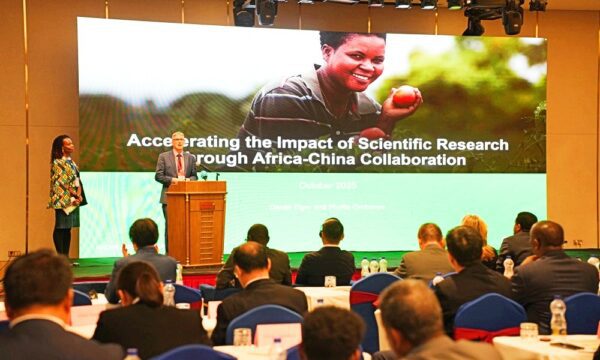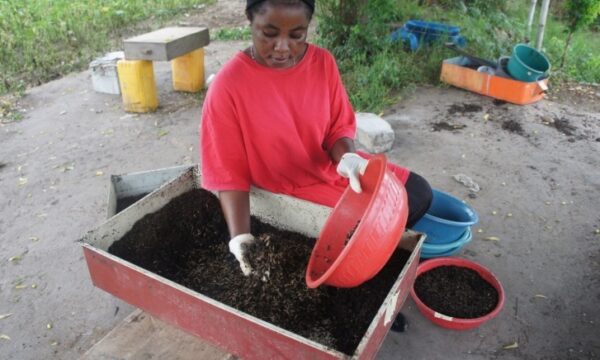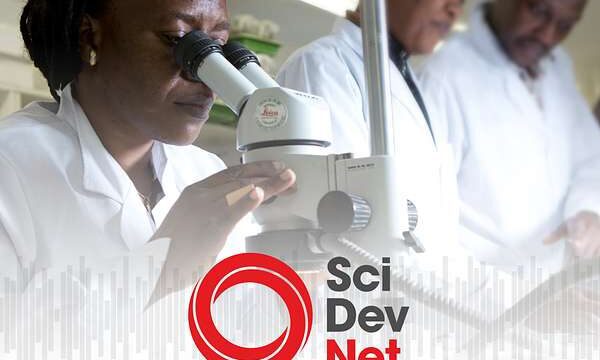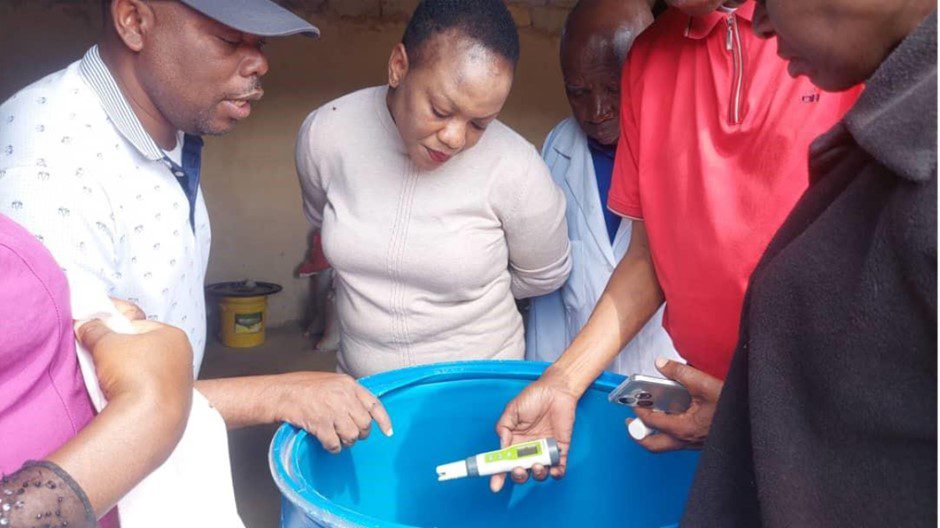
CABI is partnering with the International Centre for Genetic Engineering and Biotechnology (ICGEB) to launch the Nature-Based Microbial Solutions for Sustainable Agriculture (NAMSSA) project and help ensure greater sustainable food security.
With CABI’s expertise and funding support from ICGEB, the NAMSSA project aims to commercialise VH Biofertilizer in Zambia. It will also promote the conservation of biodiversity, improve soil health, and reduce food insecurity in sub-Saharan Africa through microbial innovations that are safe for consumers, farmers, and the environment.
The project is part of ICGEB’s efforts to build public-private partnerships in sub-Saharan Africa, with funding granted to the B-INOC Initiative by the Italian Ministry of Foreign Affairs and International Cooperation.
Soils that lack beneficial microorganisms that improve soil and plant quality
In Zambia, smallholder farmers have faced a decline in soil fertility, reduced crop productivity, drought, and over-reliance on synthetic fertilisers that threaten food security in the region. This reality has led to degraded soils that lack beneficial microorganisms that improve soil and plant quality.
To resolve the issue, the NAMSSA project is supporting Exotic Green Power Enterprises Limited (EGPE) in developing the VH Biofertiliser, an innovative biofertiliser produced from locally sourced organic materials. The CABI technical team, which includes Lucy Karanja and Dr Chapwa Kasoma, are working together with EGPE.
The VH Bio Fertiliser and its impact
The VH Biofertiliser is formulated by fermenting a combination of locally sourced ingredients. The biofertiliser is designed to improve soil health and enhance crop productivity for smallholder farmers due to its cultivated list of microorganisms.
It contains components with biostimulant activity that stimulate plant growth and support beneficial microbial functions in the soil, enhancing crop resilience to biotic and abiotic stresses and contributing to higher yields.
“Farmers who have used the VH Biofertiliser report improvement in soil structure, increased biological activity, and enhanced crop yields,” said Ms Karanja.
Bridging the gap to implementation
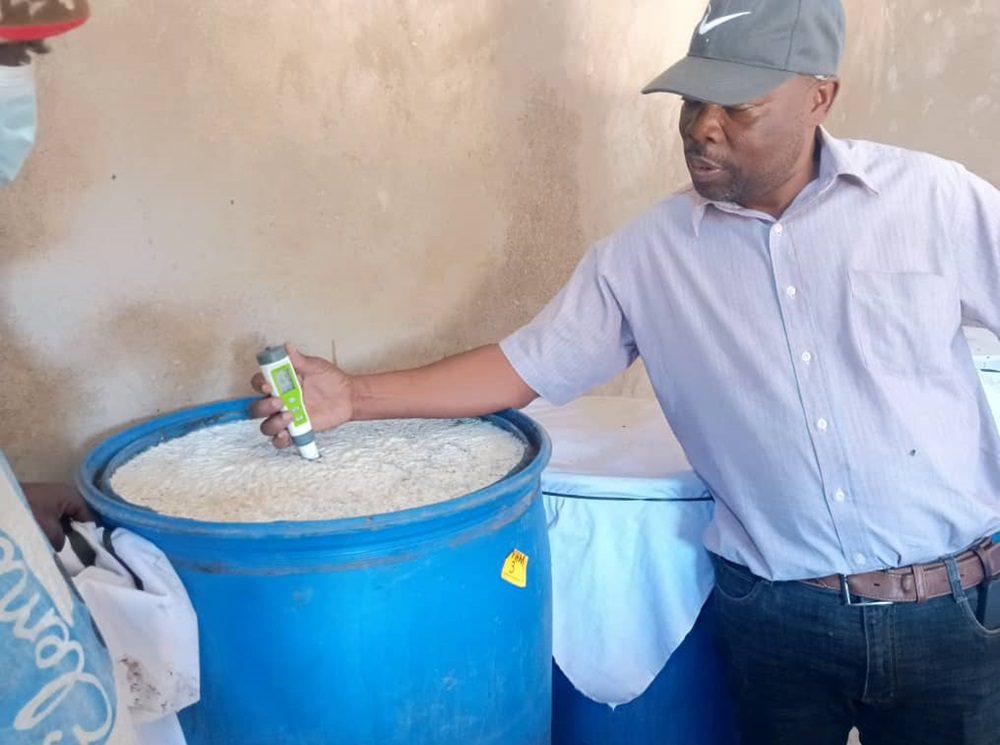
Fermentation of the product.
With its incredible success, this VH Biofertiliser remains unregistered in Zambia, limiting its universal use in the formal agricultural sector.
NAMSSA’s mission is to assist in the process of making the biofertiliser a certified product, enabling its purchase by any farmer at an agricultural inputs store. Positioning the product as a sustainable alternative to chemical fertilizer and expanding its adoption in Zambia and beyond.
The project will provide resources to support documenting production processes, developing Standard Operating Procedures (SOPs), coordinating laboratory testing, and engaging with regulatory stakeholders to formally register the biofertiliser and make it accessible to smallholder farmers.
NAMSSA’s part in making the VH Biofertiliser accessible
To commercialise this product and expand its impact, it undergoes rigorous vetting to ensure regulation in Zambia. The initial stages involved documenting the production process, from sourcing raw materials to fermentation, maturation, and final packaging.
The NAMSSA team provided technical support throughout, closely monitoring key parameters such as temperature, pH, and moisture levels to maintain consistency across batches. During this stage, samples were taken at different stages for laboratory analysis.
Dr Kasoma said, “This process is highly effective because it ensures that all standards are met, making the product more reliable. This process also forms a technical dossier that has all the necessary documents required for biofertiliser registration with the Zambia Environmental Management Agency (ZEMA).
Standard Operating Procedures (SOPs)
Once the product documentation was completed, the next focus was on developing a set of Standard Operating Procedures (SOPs). These SOPs are necessary for the reproducibility of the biofertiliser, ensuring that the same standards are maintained across multiple product batches and that good manufacturing practice (GMP) is followed.
Additionally, they serve as part of the reference documents during the registration of the process by regulatory authorities. In total, NAMSSA helped develop 15 SOPs – covering sourcing and handling of raw materials, anaerobic and aerobic fermentation processes, quality control during pre-packaging checks, and final product handling and storage.
Compiling a technical dossier
In accordance with ZEMA requirements, products must have a technical dossier —a collection of documents that provide details on the product, prepared. The CABI technical team and EGPE prepared the technical dossier. It included production records of the batches produced during the visit, documentation of quality parameters like nutrient content and microbial diversity, and the development of a material safety data sheet (MSDS).
With the right parameters in place, the team prepared batches of the biofertiliser, each batch followed the documented Standard Operating Procedures (SOPs), closely monitored during the fermentation stage to the maturity stage. Additionally, samples were collected mid-fermentation for lab analysis on the nutrients and microbes present and to ensure the safety of the product.
VH Biofertiliser beyond Zambia
Dr Joseph Mulema, Project Manager and Senior Scientist, Research at CABI, said, “CABI aims to help Exotic Green Enterprises register the VH Biofertiliser beyond Zambia, to other countries where the NAMSSA project is active. Hence, the team reviewed data requirements for potential future registration of the VH Biofertiliser in countries such as Kenya and Benin.
“Furthermore, the insights gained will inform the next phase of technical support to ensure the product is well-positioned in other countries.”
Additional information
Main image: The CABI technical team, including Dr Natasha Mwila, CABI’s Regional Director, Southern Africa, with Exotic Green Enterprises directors, during a factory visit.
Relevant stories
Related News & Blogs
CABI partners with The African Academy of Sciences to support Africa’s agricultural transformation
4 December 2025

